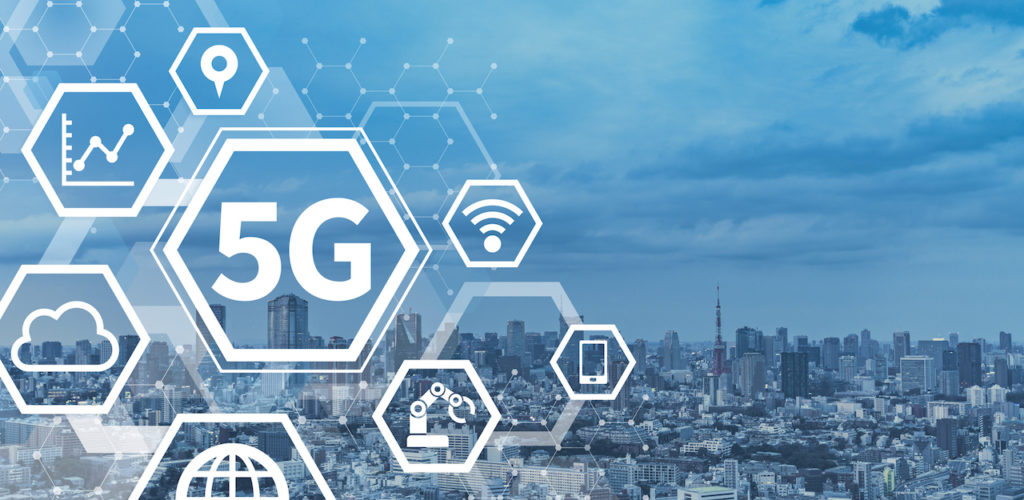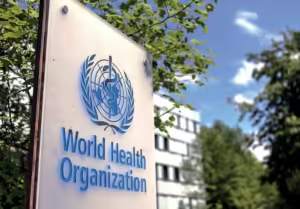TELECOM | 15 essential things to know about 5G in 2020

5G (fifth-generation mobile communications system) cocnept.
5G, the next revolution in wireless technology, promises to make incredible leaps and bounds in transmitting data to and from computers and handheld devices. That’s the basic marketing pitch.
In fact, 5G is at the center of what is being hyped about as the cold war for global supremacy between the once mighty United States and rising superpower wannabe China. Whoever comes out on top wouldl rule the world, or at the very least, dictate the tempo of tech-driven life on the planet in the coming years.
So, it’s time for many of us on the sidelines to know more about this upcoming wireless technology standard that’s right around the next bend. Let Tech Sabado count them down.
1. 5G stands for Fifth Generation cellular wireless. It is the next upgrade, a vast improvement in fact, over the existing 4G technology that powers today’s mobile phones.
2. 5G leaves 4G in the dust because of it could accommodate a lot more data, significantly reduce data transfer at transmission rates by 10 to 100 times faster than 4G, and support a much larger number of connected devices.
3. This huge leap in technological capabilities is expected to usher in driverless vehicles, distance surgery and smart cities as well as push to greater heights the beneficial application of Internet of Things (IoT), artificial intelligence (AI), virtual reality and the Fourth Industrial revolution. 5G’s advent wouldl be a “game changer” in every aspect of modern life in the 21st century.
4. Early this year, China, the United States and South Korea were leading the race to have the most 5G coverage by 2021. By April 2020 at the peak of the global Covid 19 pandemic, China has reportedly built 80,000 base stations against a target of 250,000 stations for this year. In the U. S., 5G is said to have been rolled out in 34 areas, mostly densely populated cities, so far and the national strategy with respect to the onslaught of the Covid-19 has been to speed up installation of 5G sites principally due to the projected escalation of online transactions in response to work from home and quarantine restrictions.
5. South Kora launched the world’s first 5G network at the 2018 Winter Olympics and debuted the world’s first commercial 5G network in April last year. Singapore, another Asian tiger, is preparing to start 5G trials this year with its factories in light of the halt in global production.
6. In the Philippines, Smart showcased the latest wireless innovation with the first 5G-powered Esports exhibition match during the SEA Games last year. Globe officially made its 5G fixed wireless broadband service called Globe At Home Air Fiber commercially available in select areas in Rizal, Cavite, and Bulacan in the fourth quarter of 2019. Both telco giants announced bigger 5G roll-outs this year until Covid-19 intervened with its own sick scheme.
7. China is reputedly the world’s largest maker of telecoms equipment and about two-thirds of 5G networks outside of China depends on equipment from Huawei, the state-sponsored multinational ICT company. A political row with the US that led to the ban on Huawei’s presence on American soil has arguably been partly responsible for US’ lag behind China’s pace-setting 5G dominance. The American brag is that with dependable Western partners, the US catch up on the Chinese lead with better, more resilient 5G platforms.
8. In China, building base stations entails upgrades on existing 4G base stations and the current 5.5 million base stations are targeted to be 5G-ready by 2027. In contrast, US telcos have to construct new 5G towers that traverse private property and the ensuing probable violation of privacy and security becomes a major barrier to extensive 5G deployment on top of the thorny allocation of 5G frequency, the high cost to build and device support.
9. Potential health risks have been raised against 5G mainly because towers have to be spaced no more than 150 meters apart, which has been interpreted to pose threats from short frequency electromagnetic radiation emitted in a smaller area than 4G’s. On the 5G Q&A at the World Health Organization website, the question on the potential health risks of 5G was answered with “To date, and after much research performed, no adverse health effect has been causally linked with exposure to wireless technologies.” Last April 1, however, 180 scientists and doctors from 36 countries recommended to the EU a moratorium on 5G roll-out until scientists independent from the telco industry have fully investigated the potential hazards of 5G on human health and the environment
10. Recently, 5G acting as a spawning ground of Coronavirus has been the subject of controversy on social media. There are reports that cell towers have been burned down in various parts of the world ignited by a range of conspiracy theories. The loudest theory holds that Wuhan, the suspected birthplace of the pandemic virus, is among China’s pilot 5G-powered smart cities. Another theory suggests that 5G suppresses the immune system, making the weakened body susceptible to the virus.
11. Scientists and medical experts agree that the 5G-Cornonavirus connection is the product of imaginative conspiratorial minds. On Wuhan link to Coronavirus by being a pilot smart city, keen 5G development observers contend that other designated Chinese smart cities like Guangzhou and Shanghai, including Beijing, did not have the same intense Covid-19 upsurge as Wuhan’s. As for the other conspiracy theory, it is argued that 5G’s non-ionizing radiation has no damaging effects at the cellular level compared to real serious bodily harm from long-term exposure to X-ray.
12. The effects of Covid-19 on climate change are a bit more subtle. An article in Sunday New York Times championed the clear, less polluted skies from Los Angeles to Beijing attributing it to reduced human activity due to lockdowns, quarantine and work from home arrangements. The fishes and dolphins are back to the clear waters of Venice canal in Italy, it noted. There was hope for a cleaner global environment if the surprising turn of events continues to the post-pandemic period.
13. Another observation had a less optimistic undercurrent. If China, a non-signatory to the global climate change accord, maintains the reduced pace of its production capacity (by catering more to its domestic demand), the rest of the world, including the developed economies, could teeter to a deep recession. However, if Beijing picks up from where it left off before the pandemic, the level of carbon emissions wouldl catapult to an even higher level as China’s energy and industry sectors make up for lost opportunities and in the process, possibly trigger the onset of climate change adversities earlier than projected.
14. In its “State of the World’s Forest 2020,” the Food and Agriculture Organization (FAO) of the United Nations reported that the poor who lost casual work in the cities due to the pandemic wouldl chose to return home to rural areas where they could do undue damage to unspoiled land, water and forest resources. One likely scenario is that the poor wouldl cut down trees for food, fuel and shelter, and unknowingly and inadvertently further reduce the capacity of forests to sequester carbon from the atmosphere. That’s one more source of global warming rise!
15. 6G, yes, that’s an even six, is already on the horizon, with participants to the virtual 6G Wireless Summit last March already reaching a consensus on a working blueprint to the next wireless standard after 5G. China has already announced its intent to rollout 6G wireless mobile with terabit speeds by 2030. It’s a curious coincidence because in 2018, the Intergovernmental Panel on Climate Change (IPCC) warned that mankind has only until 2030 to act decisively to avoid the worst consequences of runaway climate change.



